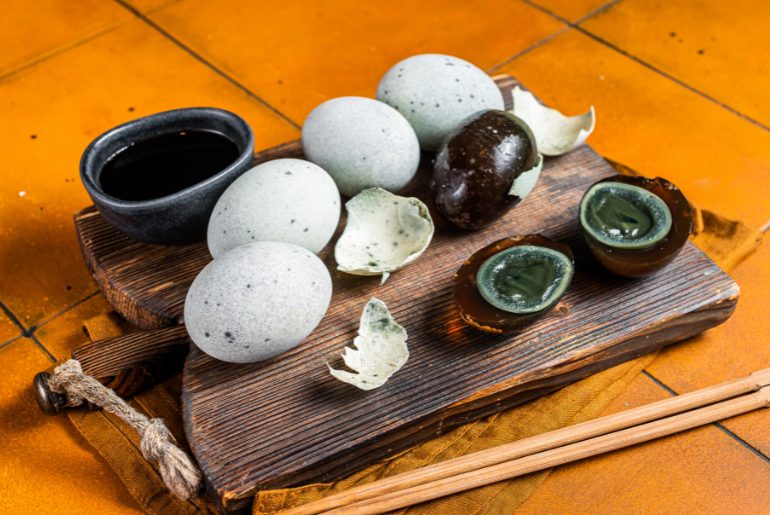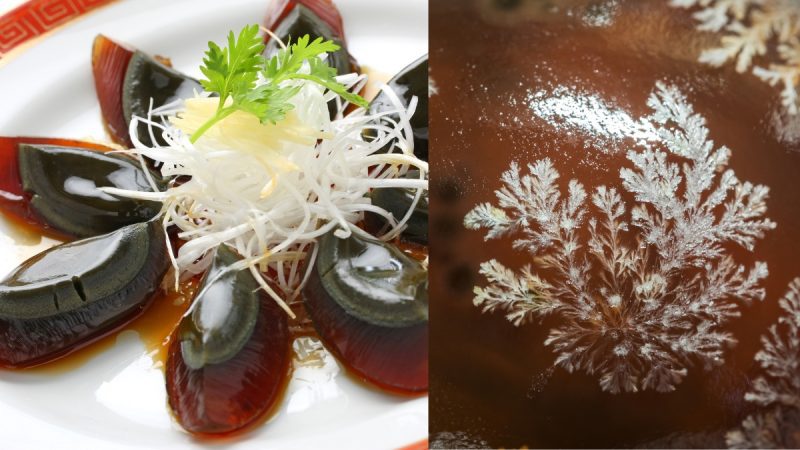Imagine a culinary journey through time, where ordinary eggs undergo a miraculous transformation to emerge as century eggs, also known as preserved eggs or alkalized eggs. These ancient delicacies have tantalised taste buds for centuries, with a history as rich and colourful as their appearance. Imagine duck, chicken, or quail eggs, carefully preserved in a concoction of clay, ash, salt, quicklime, and rice hulls. Over several weeks to months, these humble eggs undergo a magical metamorphosis.
The Timeless Tale Of Century Eggs

Century eggs are a unique Chinese delicacy with a fascinating history dating back at least four centuries. These eggs undergo a preservation process that transforms their appearance, taste, and texture. During the preservation process, which can last several weeks to months, the egg yolk turns into a dark green or grey colour with a creamy consistency and strong flavour, while the egg white becomes a dark brown, translucent jelly with a salty taste.
This transformation is due to the presence of hydrogen sulfide and ammonia, which develop as a result of the alkaline environment created during curing.
The complex designs that can resemble pine branches on the egg white’s surface are one distinctive characteristic of century eggs. These patterned eggs, also referred to as Songhua eggs, are valued for their superior quality.
Also Read: Gordon Ramsay’s Mom Roasts Him; Savagely Calls His Undercooked Pie, “Sink In The Middle, Titanic”
Their Enduring Appeal And Ming Dynasty Legacy

The origins of century eggs are steeped in legend, with stories dating back to the Ming Dynasty. One tale involves a homeowner in Hunan who discovered duck eggs in a pool of slaked lime, while another story attributes their discovery to a young duck farmer leaving eggs in a garden as a courting gesture.
Traditionally, century eggs were made by coating eggs in a mixture of clay, wood ash, calcium oxide, and salt, which was then allowed to harden over several months. However, modern methods have simplified the process, using a solution of table salt, calcium hydroxide, and sodium carbonate to achieve similar results in a shorter time frame.
Century eggs can be enjoyed in various ways, including sliced and drizzled with black vinegar, served with pickled ginger, mixed with tofu, or cooked with rice porridge. They are also commonly used on special event platters alongside other delicacies.
Century eggs are a fascinating culinary tradition with a rich history and a diverse range of uses in Chinese cuisine. Their unique appearance, flavour, and texture make them a beloved delicacy enjoyed by many.
Cover Image Courtesy: Canva
For more such snackable content, interesting discoveries and the latest updates on food, travel and experiences in your city, download the Curly Tales App. Download HERE.





